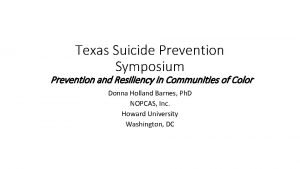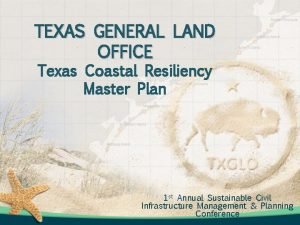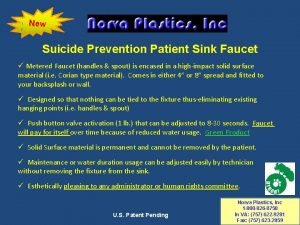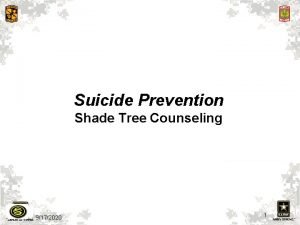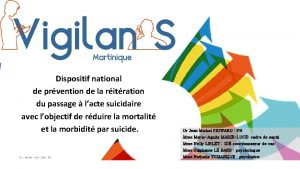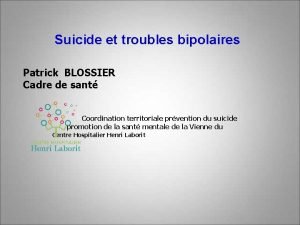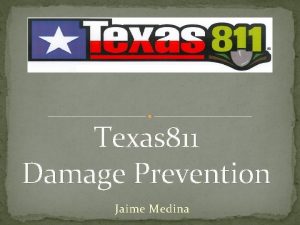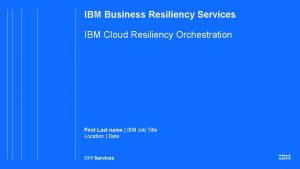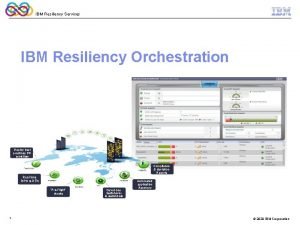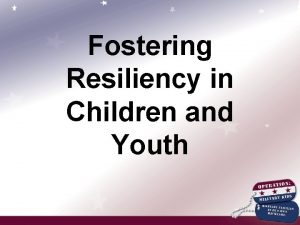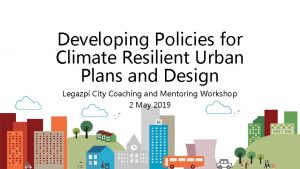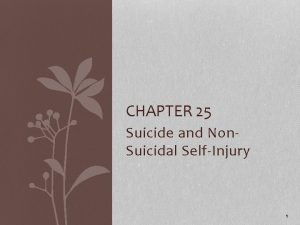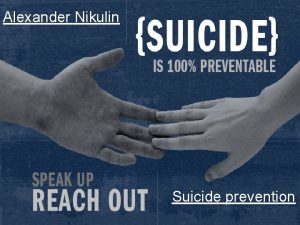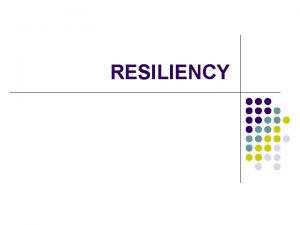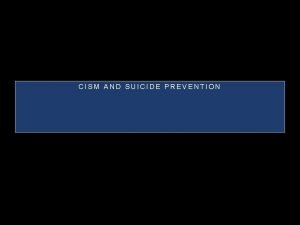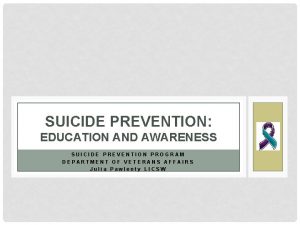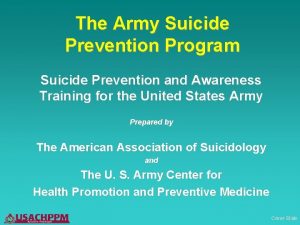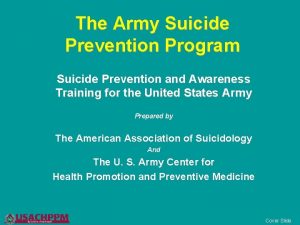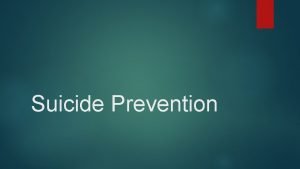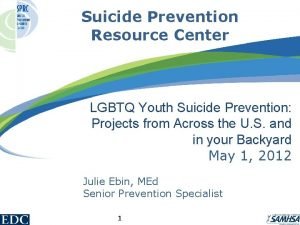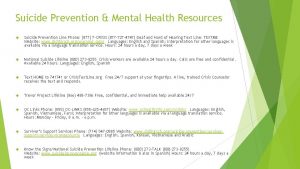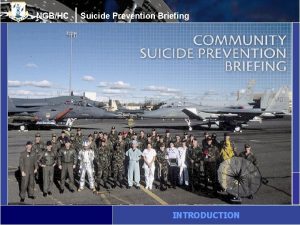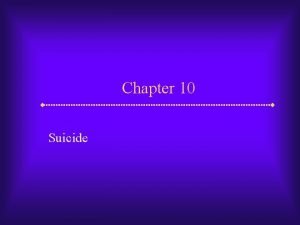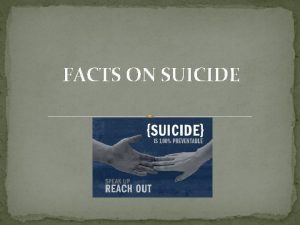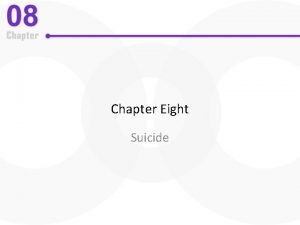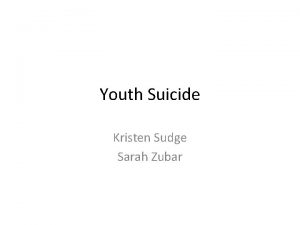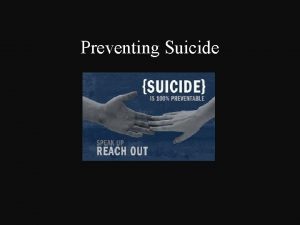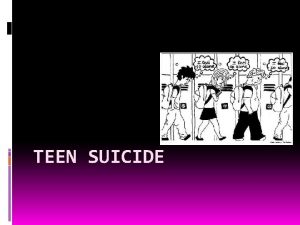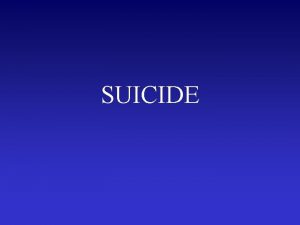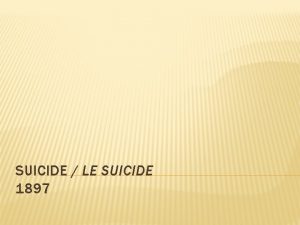Texas Suicide Prevention Symposium Prevention and Resiliency in






















- Slides: 22

Texas Suicide Prevention Symposium Prevention and Resiliency in Communities of Color Donna Holland Barnes, Ph. D NOPCAS, Inc. Howard University Washington, DC

Agenda • Resiliency in the African American Communities – say what? ? ? • Suicide rates, comparatively • Best methods for prevention and intervention in our communities

Defining Resiliency…………………. The ability to overcome challenges of all kinds–trauma, tragedy, personal –and bounce back stronger, wiser, and more personally powerful. It's important because this is what we need to do when faced with life's inevitable difficulties.

Cultural stressors • racial discrimination may be a chronic source of trauma…too much trauma in a child’s life thwarts resiliency • Lack of trust from the diverse community • Lack of knowledge on the part of the practitioner • Miscommunications • Language barriers

Premature Death in Early Adulthood Common Developmental Contexts for Different Adverse Outcomes Acc um u Ris lating k HOMICIDE MVAs & Accidental Poisoning Suicide Prevention & Intervention Opportunities Legal System Involvements Emergency Room Visits Mental Health & Chemical Dependency Treatment Contacts Emerging Behavioral Problems & Mental Health Disturbances School Difficulties Alcohol and Substance Misuse Disruptive Family Factors Disadvantaged Economic & Social Factors Caine & Forbes-Jones, 2010 Indicated & Clinical Selective & Indicated Universal & Selective

Deaths in our community NOT generally referred to as Suicides Quote from Antoine Quichocho (former Howard student) “Instead of committing the act on my own, I’d put myself in situations where someone else would actually do it for me…I would threaten people who were known killers. ” In predominantly black cities, homicide rates are considerably high than suicide rates, such as DC, Gary, Baltimore, and Detroit.

Suicide, homicide, drug induced deaths (Rate per 100, 000 - USA, 2013) Race Age/Sexes Suicide Homicide Drug Induced White 15 - 65 20. 57 3. 19 27. 19 Hispanics 15 - 65 7. 66 7. 21 10. 98 Blacks 15 - 65 7. 50 27. 24 14. 50 Asian/Pacific Islanders 15 - 65 7. 61 2. 04 3. 93 AIAN 15 - 65 25. 18 10. 85 34. 70

Suicide, homicide, drug induced deaths (Rate per 100, 000 -Texas, 2013) Race Age Suicide Homicide Drug Induced White All ages 17. 75 3. 75 14. 75 Hispanics All ages 5. 98 4. 49 6. 30 Blacks All ages 5. 46 14. 74 8. 91 Asian/Pacific Islanders All ages 6. 40 1. 39 2. 28 AIAN All ages -----

Best practices for suicide prevention in our communities of color • Learn how to recognize symptoms (gatekeeper trainings) • Constantly assess for suicidal ideations • Get your children’s schools involved (Zee’s story) • Get your religious institutions involved (Health ministries) • Parents and families

General Suicide Risk Factors and Predictors for African Americans 1. Depression 8. Lack of family support 2. Mental health disorders 9. Co-morbidity 3. Delinquent behavior 10. Substance abuse 4. Post Traumatic Stress Disorder (PTSD) 11. Financial and Work-related Issues 5. Aggressive behaviors (Ideation and externalized violence) 12. Poverty & Racism 6. History of abuse (physical, emotional, verbal, sexual) 7. Marital & Relationship Problems 13. Social & Status Integration Stress (acculturation, assimilation, structural strain) 14. Access to and knowledge of firearms and other lethal means

Protective Factors & Strengths 1. 2. 3. 4. Religiosity Strong Cultural/Ethnical identity Family Support (Biological and Extended) Effective and appropriate clinical care for mental, physical, and substance abuse disorders 5. Accessibility clinical interventions and support services

Recommendations for Suicide Prevention • Develop new suicide monitoring systems for tracking suicides and suicidal behaviors and establish new prevention technologies to reduce access to lethal means. • Develop new ways of assessing suicide risk factors and help seeking behaviors. • Build on research knowledge-base to further understand explain suicidality and to discover new suicide prevention strategies and treatment methods. • Promote collaboration of interdisciplinary groups with the media to ensure informed portrayals of suicide and associated risk factors. • Extend mental and physical health services/resources, substance abuse treatment programs and support services to suicide survivors in schools and workplaces.

Recommendations for Suicide Prevention (cont. ) • Develop and implement effective curriculums training families and community members (those directly linked to individuals) on how to recognize, respond to, and refer individuals that display visible signs of suicide risk and other mental and substance abuse disorders. • Dismantle barriers to care across public and private agencies and create incentives to treat patients with co-morbidities. • Institute continuous education and training opportunities that instruct health, mental health, substance abuse, and other human service professionals on effective ways to recognize, assess, treat and to intervene when clients display conditions, illnesses and disorders associated with suicidality. • Encourage and lobby for public/private sector partnerships and interdisciplinary collaboration to develop holistic plans for suicide prevention among different groups.

Recommendations for Suicide Prevention (cont. ) • Develop and implement programs that provide suicide prevention training and education to youth (beginning at pre-adolescent (10 years old) stage. • Develop and implement strategic plans to minimize the stigma associated with suicidal risk factors and behaviors that will be applicable across different groups. • Expand community-level awareness of and resources for suicide prevention methods and services, as well as help-seeking behaviors. • Increase public awareness by providing education that highlights suicide as a preventable public health issue, through the use of easily assessable information technologies.

How do we know what we know? Assessment is based on: • How much we learn from the person • The context in which suicide is being considered • Recognition of warning signs • Presence of risk factors • Presence of protective factors • What the suicidal person is willing to do to help us save his or her life

In Summary - Prevention and Intervention…. • Staying integrated (community, family, etc) • Educational awareness • Available mental health services • Adequate professional care • Good support system

#1 Outreach • Find out what is already in place • Couple it with traditional evidence-based practices without devaluing their practices • Learn the culture you are trying to reach and understand its history

#2 Make a connection • Explore what is going on by asking the right questions • What happened and how can I help? • Cultural metaphors should not be dismissed – metaphors are pervasive in everyday life, not just a language but in thought and action.

#3 Accept and Appreciate • You want to understand what they are saying to you…. if you do not ask them to explain it to you so that you CAN understand

#4 Get them the help that they need…. . • Who in their community do they trust? • How are situations like this managed in your community?

A final note…. Despite our best efforts, there will always be some, whether through their genetic predisposition and/or their developmental history, who will be more susceptible to suicidal behavior. Some will travel down the path to suicide without ever displaying any recognizable danger signs. Some will travel down the path very quickly and don’t want any intervention. Suicide is an individual decision and therefore, ultimately, the responsibility of the individual. However, that doesn’t relinquish our obligation, but only serves as a challenge to be observant and aware so that we can identify all who are at risk and apply the appropriate level of intervention.

THANK YOU! Donna Holland Barnes, Ph. D NOPCAS, Inc. Howard University Washington, DC 202 -549 -6039
 Texas suicide prevention symposium
Texas suicide prevention symposium Primary prevention secondary prevention tertiary prevention
Primary prevention secondary prevention tertiary prevention Texas coastal resiliency master plan
Texas coastal resiliency master plan Mad acronym suicide prevention
Mad acronym suicide prevention Withdrawal glencoe
Withdrawal glencoe Suicide prevention chain teach
Suicide prevention chain teach Suicide prevention sink
Suicide prevention sink Army suicide prevention situational questions
Army suicide prevention situational questions Prévention du suicide
Prévention du suicide Suicide prevention month quotes
Suicide prevention month quotes Army suicide prevention training
Army suicide prevention training Prévention suicide
Prévention suicide Business continuity and resiliency services
Business continuity and resiliency services Texas 811 color codes
Texas 811 color codes Ibm cloud resiliency
Ibm cloud resiliency Ibm resiliency orchestrator
Ibm resiliency orchestrator Aix smit
Aix smit Ibm i high availability
Ibm i high availability Sgip equity resiliency program
Sgip equity resiliency program The resiliency wheel
The resiliency wheel Nyc climate resiliency design guidelines
Nyc climate resiliency design guidelines Resiliency
Resiliency The sad persons scale
The sad persons scale
